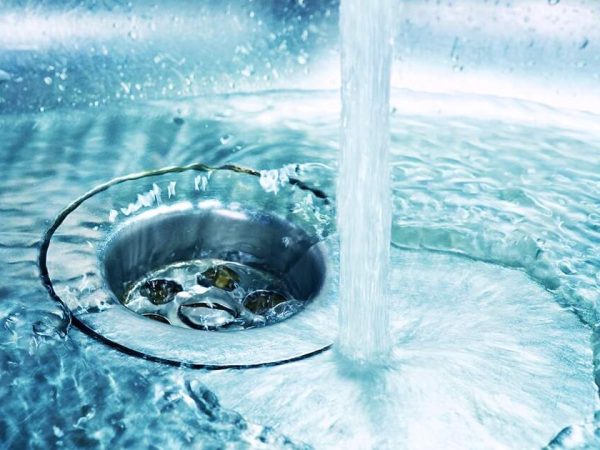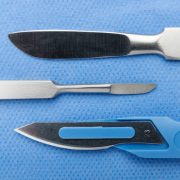How to Remove Mold from Silicone: 10 Powerful Methods That Actually Work
Mold growth on silicone surfaces can be both unsightly and troublesome. Whether it’s on seals, kitchenware, or bath fixtures, mold can degrade the appearance and functionality of silicone items. Knowing how to remove mold from silicone effectively is crucial for maintaining cleanliness and extending the life of your silicone products. In this comprehensive guide, we’ll explore ten powerful methods to tackle this issue and restore your silicone surfaces to their original state.
How to Remove Mold from Silicone Using Vinegar
How to Remove Mold from Silicone: Vinegar is a versatile and eco-friendly solution for removing mold from silicone. Its natural acidity makes it effective at breaking down mold and mildew. To use vinegar for mold removal, follow these steps:
1. Prepare the Vinegar Solution: Mix equal parts of white vinegar and water in a spray bottle.
2. Apply to Affected Areas: Spray the solution directly onto the moldy silicone surface.
3. Let It Sit: Allow the solution to sit for about 10-15 minutes. This gives the vinegar time to penetrate and break down the mold.
4. Scrub the Surface: Use a soft brush or sponge to scrub the moldy areas gently.
5. Rinse and Dry: Rinse the silicone thoroughly with clean water and dry it completely with a cloth.
Vinegar is an excellent starting point for tackling mold because it’s readily available and doesn’t involve harsh chemicals.
How to Remove Mold from Silicone with Baking Soda
Baking soda is another powerful and natural cleaning agent for mold removal. It’s mildly abrasive, which helps scrub away mold without damaging the silicone. Here’s how to use baking soda:
1. Create a Paste: Mix baking soda with a small amount of water to form a thick paste.
2. Apply the Paste: Spread the paste over the moldy silicone surface.
3. Let It Sit: Allow the paste to sit for about 15-20 minutes. Baking soda will help lift the mold from the silicone.
4. Scrub Gently: Use a soft brush or sponge to scrub the area, focusing on moldy spots.
5. Rinse and Dry: Rinse the surface with water and dry thoroughly.
Using baking soda is an effective and safe method for removing mold, and it also helps deodorize the area.
How to Remove Mold from Silicone with Hydrogen Peroxide
Hydrogen peroxide is a strong disinfectant and bleaching agent that can effectively kill mold and mildew. Here’s how to use it for silicone surfaces:
1. Prepare the Solution: Pour 3% hydrogen peroxide into a spray bottle.
2. Apply to Surface: Spray the hydrogen peroxide directly onto the moldy silicone.
3. Allow It to Sit: Let it sit for about 10 minutes to penetrate the mold.
4. Scrub the Area: Gently scrub the silicone with a brush or sponge.
5. Rinse and Dry: Rinse the surface thoroughly with water and dry with a cloth.
Hydrogen peroxide is a great option if you need a more potent solution for stubborn mold.
How to Remove Mold from Silicone Using Lemon Juice
Lemon juice is not only a natural cleaner but also has antibacterial properties. It can be a refreshing alternative for removing mold from silicone. Follow these steps:
1. Apply Lemon Juice: Squeeze fresh lemon juice directly onto the moldy area.
2. Let It Sit: Allow the lemon juice to sit for 10-15 minutes.
3. Scrub the Surface: Use a soft brush or sponge to scrub away the mold.
4. Rinse and Dry: Rinse with water and dry the silicone thoroughly.
Lemon juice has a pleasant scent and natural cleaning properties, making it a great option for smaller mold problems.
How to Remove Mold from Silicone with Commercial Mold Cleaners
For severe mold infestations, commercial mold cleaners can be highly effective. These cleaners are formulated to tackle tough mold and mildew. Here’s how to use them:
1. Choose a Cleaner: Select a commercial mold cleaner suitable for silicone surfaces.
2. Follow Instructions: Apply the cleaner according to the manufacturer’s instructions.
3. Scrub and Rinse: Use a brush or sponge to scrub the affected areas, then rinse thoroughly with water.
4. Dry the Surface: Ensure the silicone is completely dry to prevent future mold growth.
Commercial cleaners are powerful but should be used with caution, as they may contain harsh chemicals.
How to Remove Mold from Silicone with Bleach
Bleach is a strong disinfectant that can effectively kill mold on silicone. However, it should be used carefully to avoid damaging the silicone or surrounding areas. Here’s how:
1. Prepare the Bleach Solution: Mix one cup of bleach with one cup of water.
2. Apply the Solution: Use a sponge or cloth to apply the solution to the moldy area.
3. Let It Sit: Allow the bleach solution to sit for 10 minutes.
4. Scrub the Surface: Gently scrub the silicone with a brush or sponge.
5. Rinse and Dry: Rinse thoroughly with water and dry completely.
Bleach is effective for tough mold problems but can be harsh, so ensure proper ventilation during use.
How to Remove Mold from Silicone Using Ammonia
Ammonia is another powerful cleaning agent that can tackle mold on silicone surfaces. It’s best used in well-ventilated areas. Here’s the method:
1. Prepare the Ammonia Solution: Mix ammonia with an equal amount of water.
2. Apply to Surface: Use a cloth or sponge to apply the solution to the moldy silicone.
3. Let It Sit: Allow it to sit for about 10 minutes.
4. Scrub and Rinse: Scrub the area and then rinse thoroughly with water.
5. Dry the Silicone: Ensure the silicone is completely dry to prevent future mold growth.
Ammonia is a strong cleaner but should be handled with care due to its potent fumes.
How to Remove Mold from Silicone with Tea Tree Oil
Tea tree oil is a natural antifungal agent that can help eliminate mold. It’s a great option for those looking for a natural and effective solution. Follow these steps:
1. Mix Tea Tree Oil Solution: Combine 1 teaspoon of tea tree oil with 1 cup of water in a spray bottle.
2. Apply to Mold: Spray the solution onto the moldy silicone surface.
3. Let It Sit: Allow it to sit for 10-15 minutes.
4. Scrub the Surface: Gently scrub the affected areas.
5. Rinse and Dry: Rinse with water and dry thoroughly.
Tea tree oil is a natural alternative that not only removes mold but also leaves a pleasant scent.
How to Remove Mold from Silicone Using Borax
Borax is a natural mineral that can be used to clean moldy silicone surfaces. It’s effective and non-toxic when used properly. Here’s how to use it:
1. Prepare the Borax Solution: Mix 1/2 cup of borax with 1 cup of water.
2. Apply to Surface: Use a sponge or brush to apply the solution to the moldy silicone.
3. Scrub and Let It Sit: Scrub the surface and let the solution sit for 10 minutes.
4. Rinse and Dry: Rinse thoroughly with water and dry the silicone.
Borax is a great option for those looking for a more natural cleaning solution.
How to Remove Mold from Silicone with Rubbing Alcohol
Rubbing alcohol is an effective disinfectant and can help remove mold from silicone surfaces. Here’s the method:
1. Prepare Rubbing Alcohol Solution: Pour rubbing alcohol into a spray bottle.
2. Apply to Moldy Areas: Spray the rubbing alcohol directly onto the mold.
3. Let It Sit: Allow it to sit for 10 minutes to penetrate the mold.
4. Scrub the Surface: Gently scrub the affected areas with a brush or sponge.
5. Rinse and Dry: Rinse with water and dry thoroughly.
Rubbing alcohol is a powerful cleaner that also evaporates quickly, reducing the risk of moisture-related issues.
Conclusion
Removing mold from silicone doesn’t have to be a daunting task. By using the methods outlined in this guide, you can effectively tackle mold and restore your silicone surfaces. Whether you opt for natural solutions like vinegar, baking soda, or lemon juice, or more robust options like bleach and commercial cleaners, each method offers its own advantages. Regular maintenance and prompt action are key to preventing mold from returning.
By understanding how to remove mold from silicone Using these powerful methods, you can keep your silicone items looking clean and functioning well. Choose the method that best suits your needs and always ensure proper ventilation and safety when using strong chemicals.
FAQs
Q1. What causes mold to grow on silicone surfaces?
Mold often grows on silicone surfaces due to moisture and poor ventilation. Areas that are frequently exposed to water, such as bathroom seals or kitchen countertops, are particularly prone to mold growth if not properly dried and ventilated.
Q2. Can I use regular household cleaners to get rid of mold on silicone?
Yes, many regular household cleaners can effectively remove mold from silicone, especially if they contain ingredients like vinegar or baking soda. However, for more stubborn mold, specialized mold cleaners or stronger solutions might be necessary.
Q3. Is it safe to use bleach on silicone surfaces?
Bleach can be used on silicone surfaces to remove mold, but it should be handled with care. Ensure proper ventilation, use it in a diluted form, and thoroughly rinse and dry the silicone to avoid any damage or residue.
Q4. How can I prevent mold from growing on silicone in the future?
To prevent future mold growth on silicone, ensure proper ventilation in areas prone to moisture, such as bathrooms and kitchens. Regularly clean and dry silicone surfaces, and address any leaks or water issues promptly.
Q5. What are some natural alternatives to chemical cleaners for mold removal?
Natural alternatives to chemical cleaners include solutions made with vinegar, baking soda, lemon juice, and tea tree oil. These options are effective and less harsh on both the environment and the silicone surfaces.
Also read: Travel Insurance for Japan: 10 Common Mistakes Travelers Make











